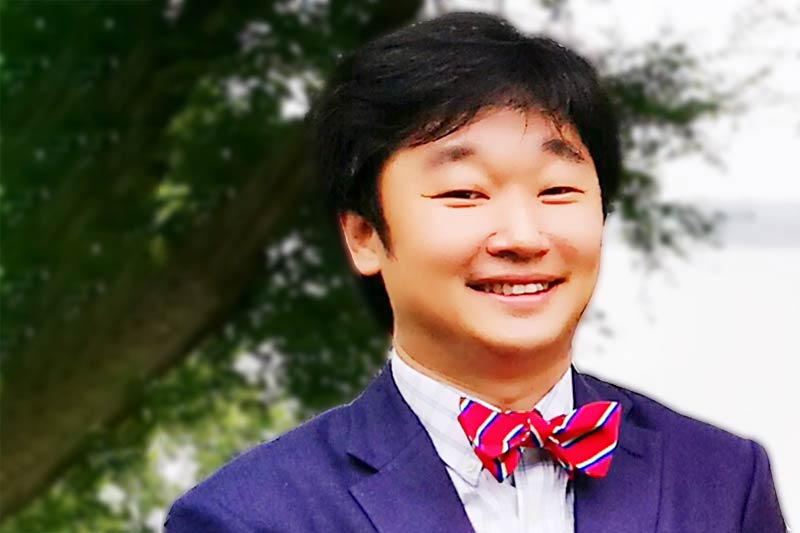
Entrepreneurship and innovation are projected to be key drivers of Singapore’s future economic growth. To ensure there are adequate leaders and talents to meet the country’s needs, the Singapore University of Technology and Design (SUTD) launched a 4.5-year integrated Bachelor & Master Programme on Technology Entrepreneurship (SUTD Technology Entrepreneurship Programme or STEP) in January 2017.
Students will receive a one-year overseas experience studying in universities and working with industry partners, including 1) 15 weeks of entrepreneurship studies in a US university, such as at the University of California, Berkeley 2) summer work immersion in the San Francisco Bay area and 3) a term of cultural immersion and exchange in a Chinese university, such as Zhejiang University.
Students who complete STEP will graduate with two degrees – a Bachelor of Science/Engineering and a Master of Science in Technology Entrepreneurship. STEP will take up to 30 students as a start. In addition, SUTD will offer up to 30 bond-free scholarships to successful Singaporean applicants.
OpenGov met with Assistant Professor Dr. Jianxi Luo, who has been teaching an entrepreneurship course at SUTD for three years and is involved in STEP as an Associate Director, about ‘teaching’ entrepreneurship. Dr. Luo previously taught entrepreneurship at New York University and co-founded three startups in Boston. He has an extensive global network of connections in the start-up world.
How to ‘teach’ entrepreneurship
When we asked Dr. Luo this question, he replied, “I don’t. I have never taught entrepreneurship. I help my students learn.”
Dr. Luo helps his students to actively Read, Think and Do, which he calls the three elements of learning. For an entrepreneurship course, experiential learning is a must. Students take up projects and start up companies based on their own ideas.
Dr. Luo explained the process. There are many sub-topics under the entrepreneurship umbrella, which include opportunity identification, company formulation, concept generation, prototyping, production, marketing, sales and venture financing. For each topic there is a module and four elements are brought together to enable students to synthesise book learning and experiential learning in order to develop their own understanding of entrepreneurship.
The first element is a lecture by Dr. Luo. This is followed by a panel of 6-7 practitioners coming to the classroom, to talk about the same topic (such as team building, product development, fundraising, etc.) based on their experiences. Dr. Luo emphasised that the practitioners talk about a very specific topic under consideration, not about success in general. The students will also practise and experience the same topic (e.g., team building, product development, fundraising, etc.) as their project progresses.
At the same time, they also read cases (from sources like Harvard Business School) as homework. Dr. Luo provides guiding questions. By reading cases and answering the questions, the students think about their experiences, about the stories in the case, about what the practitioners said in the classroom, and the lecture.
Course timeline
The first month is devoted to team building and idea generation. Weeks 5 and 8 are for prototyping, lead user tests, and then crowdfunding campaign development. In week 9, all student teams launch a crowdfunding campaign to raise money and connect to early adopters all over the world. It is no longer limited to the classroom. They are pitching to the world. Dr. Luo said, “Some of them will get sufficient funding. Some won’t. At the same time, they will pitch to the investors that I invite to the classroom. Some of the projects continue after the course, to become real companies.”
How an entrepreneurship course at SUTD is different from the way it is taught as part of an MBA
In an MBA, there is discussion, reading, thinking, but practice is usually missing. That is the key difference. In business schools, students read a case before the class and discuss it in the classroom. When MBA students take an entrepreneurship class, the end-product is writing a business plan and maybe pitching to VCs.
In contrast, at an engineering school, especially a non-traditional one like SUTD with an immersive design and maker culture, students have access to a design and prototyping ecosystem. Using fabrication labs and with close support from faculty, students can convert their ideas into working prototypes. They can launch a crowdfunding campaign after 8 weeks, which would be impossible in a traditional university.
Dealing with failure
A large percentage of start-ups fail. We asked Dr. Luo how he teaches his students to deal with failure. He replied that failure has to be treated as a learning experience, “If you can learn from what you did, it is not a failure. So, the key here is to support students to look at what they do as experiments. Experiments are for learning. If they can learn, they can grow and do better next time.”
Core ingredients for success
When we asked him about his take on the core ingredients for success, Dr. Luo said, “There are so many different dimensions, different aspects. Every successful entrepreneur will have their own answer. My background was multi-disciplinary. The last discipline I studied was complex systems. I look at entrepreneurship as a complex system. There are so many things you have to do. You have to get the right people, you have to build a team, you have to build products and raise capital.” These things interdepend and interinfluence each other. Entrepreneurship is a typical social-technical complex system, so the design theories and principles for complex systems will be useful.
Dr. Luo went on to talk about a 3 P framework, Product, Process and People. He said that the biggest challenge in dealing with PPP is uncertainty. In a large company and government, processes are routinised and stable.
In the entrepreneurship context, people, products and processes are all uncertain, dynamic, evolving. If that’s the challenge, then how do you deal with it? The answer is experimentation. And in order to experiment well, you need to have flexibility in your products, processes and people. You have to experiment efficiently and rapidly in order to deal with uncertainty.
The Singapore start-up landscape
The Singapore government provides a range of incentives for companies, big and small, to innovate. It is trying to turn Singapore into a hub for technology innovation.
But sometimes, small companies might end up doing things like contract manufacturing for larger firms. They need to break out and innovate.
Talking about how SUTD’s curriculum fits in with the larger Singapore picture, Dr. Luo said, “Think about students from a traditional mechanical engineering or computer science discipline. They are specialised. But if you are a start-up founder, you must be multi-disciplinary and social-technical. You have only 2 or 3 people. You have to do coding, prototyping, deal with supply chain, you have to negotiate, calculate and communicate financials, have leadership skills. Our students are more well-rounded and holistic. This kind of holistic education prepares students for entrepreneurship. We are supplying the right manpower for the growing ecosystem, which demands more entrepreneurs.”
Start-up mindset in government agencies
We asked Dr. Luo, if governments need to inculcate a start-up mindset. He replied that a startup-mindset might be unnecessary for government agencies which have fundamentally different missions, incentives and structures from those of the startups and entrepreneurs. Government agencies and innovative startups create different types of values for the society; they play differentiated roles in the society. The mindsets and processes that are suitable for them should be different.
But he said that nevertheless, the Singapore government (actually it is the top leadership, rather than the agencies) had demonstrated impressive entrepreneurship in the past four decades. The economic development of Singapore has been a process of conceiving, exploring and pursuing opportunities beyond the resources that Singapore had. In the 1960s, the country was faced with extreme uncertainty and resources constraints. The development process was full of experimentation, trials and errors. The leadership was quite flexible to change along the way as well, resulting in the Singapore today. The leadership is still exploring. The creation of SUTD (first of its kind) is the latest experiment and a result of the entrepreneurial mindset of the Singapore government.
"I believe design thinking that emphasises the empathy for users and the lean startup methodology that emphasises rapid or frugal experiments with actual users can benefit the government agencies when they design new policies and civil services to serve the public. For startups, empathy mindsets and methods ensure the products and services they design are actually needed by users. For government agencies, empathy mindsets and methods may help ensure the policies and services they design can actually create value for the citizens and be appreciated by the citizens. Thus design thinking and lean startup methodology can aid the agencies to better understand, connect and serve the citizens. Other creativity methods and tools can be also useful to empower the government agencies in generating creative solutions for complex societal challenges", Dr. Luo elaborated.
Culture
Cultural factors, such as an aversion to risk-taking, can be a big obstacle in the creation of an innovation ecosystem.
Dr. Luo said that changing culture takes a long time. Trying to engineer culture can have inadvertent effects in unexpected directions. But it can happen. It can be done. He gave the example of Hangzhou which was a tourism city. It took one Jack Ma to change the culture of the whole city. Silicon Valley had early successes, Hewlett Packard and Fairchild semiconductor. Those two generated a lot of buzz and spillover effects. A lot of employees from those two companies left to start their own ventures.
Sometimes, all it takes is an accidental success or two to change people’s mindsets.
















